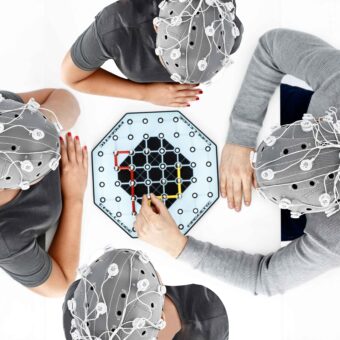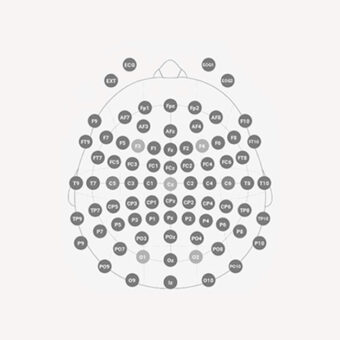Introduction to tES and TMS
Transcranial electrical stimulation (tES) and transcranial magnetic stimulation (TMS) are non-invasive brain stimulation techniques that have gained significant attention in neuroscience research and clinical applications. Both methods modulate brain activity by applying external stimuli, but they differ in their underlying mechanisms and effects. In this blog post, we will explore the pros and cons of tES and TMS, including their electric field patterns, biophysical substrates, devices, and applications.
Pros and Cons of tES
Transcranial electrical stimulation (tES) involves the application of weak electrical currents to the scalp, which can influence neuronal activity in targeted brain regions. One of the significant advantages of tES is its relative affordability and portability compared to TMS devices. It offers various modalities, including transcranial direct current stimulation (tDCS) and transcranial alternating current stimulation (tACS), allowing researchers and clinicians to tailor stimulation protocols to specific needs.
However, tES has some limitations. The electric field generated by tES is relatively diffuse and may not be as focal as TMS, making it challenging to target deep brain structures accurately. Additionally, individual variability in brain anatomy and conductivity can influence the effectiveness of tES, leading to inconsistent results across participants.
Pros and Cons of TMS
Transcranial magnetic stimulation (TMS), on the other hand, utilizes magnetic fields to induce electrical currents in the brain. This technique can elicit more focal and precise neural responses, making it well-suited for targeting specific cortical regions. TMS has been particularly valuable in mapping brain function, studying brain connectivity, and treating certain neurological and psychiatric conditions.
However, TMS devices tend to be bulkier and more expensive than tES systems. The stimulation intensity is also limited by the risk of inducing seizures or discomfort in some individuals, requiring careful monitoring during application.
Electric Field Patterns and Biophysical Substrates:
The electric field patterns in tES and TMS differ significantly due to their distinct physical principles. tES generates a steady, low-intensity electric field that can modulate neural excitability. The current flows between the electrodes placed on the scalp and passes through the skull and cerebrospinal fluid before reaching the brain tissue. The electric field distribution is relatively broad, affecting both the targeted region and surrounding areas.
TMS, on the other hand, induces a strong and rapidly changing magnetic field that can penetrate the skull and directly stimulate underlying neurons. This results in a more focal and deeper modulation of neural activity compared to tES. The orientation of neurons relative to the magnetic field influences the direction and strength of the induced currents, allowing researchers to target specific brain regions with high precision.
tES and TMS Devices
Various devices are available for research and clinical applications. tES systems typically consist of electrodes, a stimulator, and a current generator. Commercial tDCS and tACS devices are widely accessible and user-friendly, allowing for easy setup and administration.
TMS devices, on the other hand, include a coil that produces the magnetic field and a stimulator that delivers pulses. The two main types of TMS coils are the figure-eight coil, which provides focal stimulation, and the H-coil, which allows deeper penetration. Advanced TMS systems also offer neuronavigation capabilities, enabling precise targeting based on individual brain anatomy.
Applications
Both tES and TMS have found applications in various fields, including neuroscience research, cognitive enhancement, and therapeutic interventions. tES has been explored as a potential tool for cognitive enhancement, motor rehabilitation, and mood modulation. Researchers have also investigated its use in pain management and treating neurological disorders such as epilepsy and stroke.
TMS has been extensively utilized for brain mapping, helping to identify functional connectivity and investigate the causal relationship between brain regions. It has shown promise in the treatment of depression, migraines, and certain movement disorders. Moreover, TMS combined with EEG (TMS-EEG) has enabled researchers to study brain network dynamics with high temporal resolution.
Conclusion
In conclusion, tES and TMS are valuable tools for non-invasive brain stimulation with distinct advantages and limitations. tES offers affordability and portability but may lack the precision and focal effects of TMS. TMS, on the other hand, provides more targeted stimulation but requires more specialized and costly equipment. Both techniques have exciting applications in neuroscience and clinical settings, pushing the boundaries of our understanding of the human brain and offering potential therapeutic benefits.
Curious about our application of tES? Explore our Starstim® tES-EEG systems.
References:
- Nitsche MA, Paulus W. Transcranial direct current stimulation—update 2011. Restorative Neurology and Neuroscience. 2011;29(6):463-492.
- Hallett M. Transcranial magnetic stimulation: a primer. Neuron. 2007;55(2):187-199.
- Brunoni AR, Vanderhasselt MA. Working memory improvement with non-invasive brain stimulation of the dorsolateral prefrontal cortex: a systematic review and meta-analysis. Brain and Cognition. 2014;86:1-9.
- Lefaucheur JP, et al. Evidence-based guidelines on the therapeutic use of repetitive transcranial magnetic stimulation (rTMS). Clinical Neurophysiology. 2014;125(11):2150-2206.



